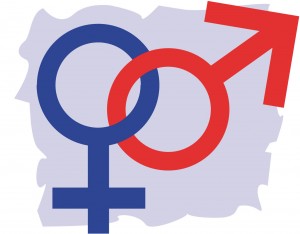Need for Research on Sexual and Reproductive Health and Rights urged
Wednesday, December 7th, 2011 1:56:36 by Fayyaz Yaseen
As the global milestones of the MDGs at 2015 and ICPD at 2014 are nearing, in the region of South East Asia gaps remain in issues surrounding Sexual and Reproductive Health and Rights (SRHR). Most ASEAN nations still face significant unmet needs for family
planning and lack of sexual and reproductive health services and supplies, and resulting in high rates of maternal mortality. In Cambodia, for example, one in four women are not using any method of contraception, and Lao PDR has one of the highest unmet need
for family planning in all of Asia Pacific – at forty percent. This highlights the necessity of finding ways to ensure that the SRH needs of women and girls in South East Asia are met.
Recognition of the importance of SRHR has been articulated at the international level through the Programme of Action of the ICPD, and other global documents. The promotion of SRHR within the regional architecture provided by ASEAN has not yet been fully
explored but there is a risk that SRHR could become subsumed within the greater (maternal) health agenda, or lost within debates over culture and religion, as addressed at the global level.
At the same time, the architecture of ASEAN presents exciting opportunities and a promising channel for the enhancement of SRHR. The recent inauguration of the ASEAN Intergovernmental Commission on Human Rights (AICHR) has opened the door and provides entry
points for the promotion of human rights in South East Asia. Furthermore, a number of legal instruments, including (but not limited to) the Ha Noi Declaration on the Enhancement of the Welfare and Development of ASEAN Women and Children (2010); the Declaration
on the Elimination of Violence Against Women in ASEAN (2004); the Declaration of the Commitment for Children in ASEAN (2001), and most currently the development of the ASEAN Declaration on Maternal Health, which, at the time of writing, is being formalized
and awaiting approval by AICHR. In addition, the ASEAN Human Rights Declaration (AHRD), is an important text currently in development (draft is to be accepted in October 2012). These declarations, commissions, and task forces, among others, need to be explored
to uncover their potential for utilization in strengthening SRHR with the ten ASEAN nations.
The inclusion of civil society and the provision of space for CSO voices have been articulated by ASEAN (and amid calls for a ‘People Centered ASEAN Community’), as well as the various bodies within the ASEAN structure (such as the ASEAN Commission for the
Promotion and Protection of the Rights of Women and Children [ACWC] and the ASEAN Intergovernmental Commission on Human Rights [AICHR]).
Mapping out and drawing a clear picture for SRHR advocacy in ASEAN is challenging for several reasons. The bodies and structures within ASEAN that deal with human rights are still relatively nascent: AICHR was only inaugurated on 23 October 2009. As all
of the members of ASEAN are signatories to the major international human rights treaties, including CEDAW and the CRC, one of the challenges is to ensure that mechanisms at the level of ASEAN do not ‘lower the bar’ of these legally binding instruments at the
international level.
However, in the light of above developments, it is time to explore how to effectively utilize the regional platform of ASEAN in achieving sexual and reproductive health goals through meaningful civil society participation.
Tags: ASEAN, millenium development goals, South East AsiaShort URL: https://www.newspakistan.pk/?p=5646

















